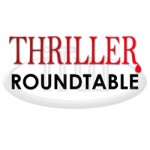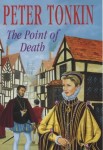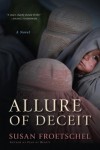

November 30 – December 6: “Is poison as a murder method old-fashioned?”
 After a holiday weekend, what better time to talk about poison? This week ITW Members Bernard Maestas, J. H. Bográn, Peter Tonkin and Susan Froetschel discuss whether poison as a murder method is old-fashioned, and if there are some new methods for poisons that evade detection?
After a holiday weekend, what better time to talk about poison? This week ITW Members Bernard Maestas, J. H. Bográn, Peter Tonkin and Susan Froetschel discuss whether poison as a murder method is old-fashioned, and if there are some new methods for poisons that evade detection?
~~~~~
 Peter Tonkin published his first novel, Killer, to international acclaim in 1978. Since then he has divided his time between writing and teaching. He has published 37 other novels including the Master of Defence series of Elizabethan murder mysteries (in which a range of poisons play a very active role) and the 30-book Mariner series of action-adventure-thrillers. Since retiring from teaching, he has been preparing a series of thrillers set in Ancient Rome, in which poison is also an important element.
Peter Tonkin published his first novel, Killer, to international acclaim in 1978. Since then he has divided his time between writing and teaching. He has published 37 other novels including the Master of Defence series of Elizabethan murder mysteries (in which a range of poisons play a very active role) and the 30-book Mariner series of action-adventure-thrillers. Since retiring from teaching, he has been preparing a series of thrillers set in Ancient Rome, in which poison is also an important element.
 Bernard Maestas lives in paradise. A police officer patrolling the mean streets of Hawaii, he has a background in contract security and military and civilian law enforcement. When not saving the world, one speeding ticket at a time, and not distracted by video games or the internet, he is usually hard at work on his next book.
Bernard Maestas lives in paradise. A police officer patrolling the mean streets of Hawaii, he has a background in contract security and military and civilian law enforcement. When not saving the world, one speeding ticket at a time, and not distracted by video games or the internet, he is usually hard at work on his next book.
 Susan Froetschel is the author of five novels. Fear of Beauty and Allure of Deceit are set in Afghanistan. Fear of Beauty was a 2014 Mary Higgins Clark Award nominee and recipient of the 2014 Youth Literature Award by the Middle East Outreach Council and the 2014 top mystery award by Military Writers Society of America. Froetschel is managing editor of YaleGlobal Online, a public-service magazine that covers globalization defined as the interconnectedness of our world. She lives in Michigan.
Susan Froetschel is the author of five novels. Fear of Beauty and Allure of Deceit are set in Afghanistan. Fear of Beauty was a 2014 Mary Higgins Clark Award nominee and recipient of the 2014 Youth Literature Award by the Middle East Outreach Council and the 2014 top mystery award by Military Writers Society of America. Froetschel is managing editor of YaleGlobal Online, a public-service magazine that covers globalization defined as the interconnectedness of our world. She lives in Michigan.
 J. H. Bográn, born and raised in Honduras, is the son of a journalist. He ironically prefers to write fiction rather than fact. José’s genre of choice is thrillers, but he likes to throw in a twist of romance into the mix. His works include novels and short stories in both English and Spanish. His debut novel TREASURE HUNT, which The Celebrity Café hails as an intriguing novel that provides interesting insight of architecture and the life of a fictional thief, has also been selected as the Top Ten in Preditors & Editor’s Reader Poll. FIREFALL, his second novel, was released in 2013 by Rebel ePublishers. Coffee Time Romance calls it “a taut, compelling mystery with a complex, well-drawn main character.” He’s a member of the Short Fiction Writers Guild, Crime Writer’s Association, and the International Thriller Writers. He lives in Honduras with his family and one “Lucky” dog.
J. H. Bográn, born and raised in Honduras, is the son of a journalist. He ironically prefers to write fiction rather than fact. José’s genre of choice is thrillers, but he likes to throw in a twist of romance into the mix. His works include novels and short stories in both English and Spanish. His debut novel TREASURE HUNT, which The Celebrity Café hails as an intriguing novel that provides interesting insight of architecture and the life of a fictional thief, has also been selected as the Top Ten in Preditors & Editor’s Reader Poll. FIREFALL, his second novel, was released in 2013 by Rebel ePublishers. Coffee Time Romance calls it “a taut, compelling mystery with a complex, well-drawn main character.” He’s a member of the Short Fiction Writers Guild, Crime Writer’s Association, and the International Thriller Writers. He lives in Honduras with his family and one “Lucky” dog.
- LAST GIRL MISSING with K.L. Murphy - July 25, 2024
- CHILD OF DUST with Yigal Zur - July 25, 2024
- THE RAVENWOOD CONSPIRACY with Michael Siverling - July 19, 2024
